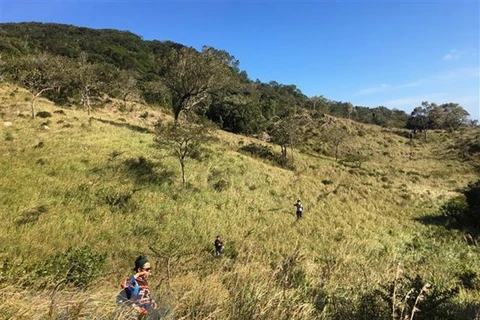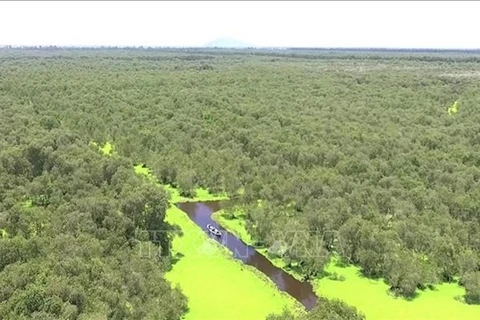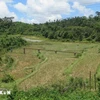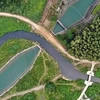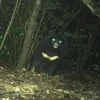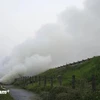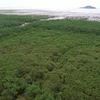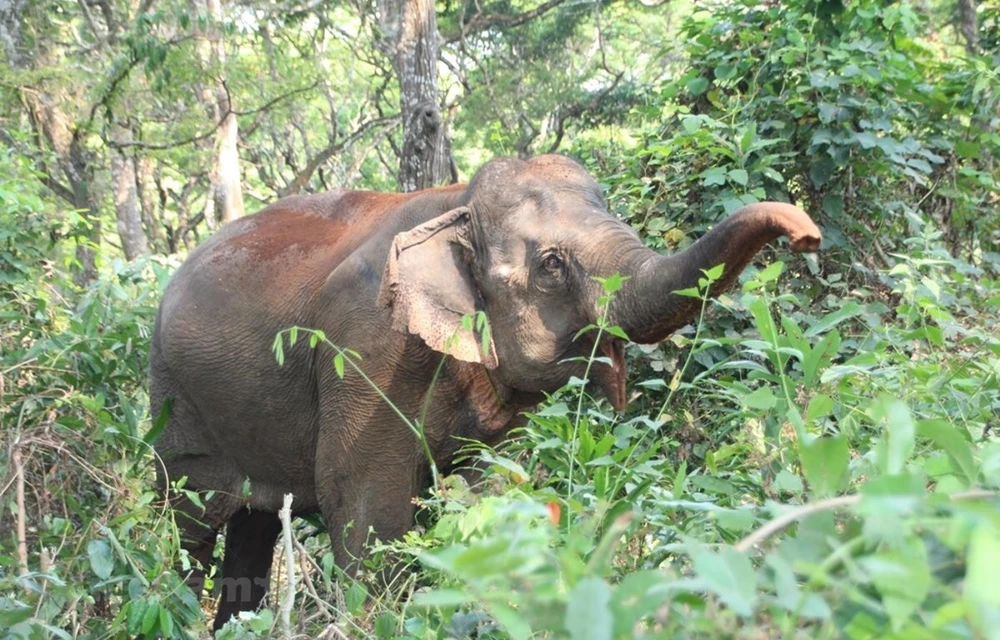
Hanoi (VNA) – The Biodiversity Conservation Agency under the Vietnam Environment Administration, Ministry of Natural Resources and Environment, has responded to the World Wildlife Day (March 3) by highlighting the central role of forests, forest species and ecosystems services in supporting the livelihoods of hundreds of millions of people.
According to the agency, wild animals in Vietnam and other parts of the world have been threatened by climate change, habitat destruction, overexploitation and illegal trade.
The World Wildlife Fund (WWF)’s Living Planet Report 2020 showed that serious declines in species population trends are a measure of overall ecosystem health, and the planet is flashing red warning signs. An average 68 percent decline in global vertebrate species populations — mammals, birds, amphibians, reptiles and fish in less than half a century (from 1970 to 2016).
On average, population trends for monitored freshwater species appear to be falling steeply, with megafauna particularly at risk. Wildlife populations found in freshwater habitats have suffered the starkest average population decline in any biome, declining by an average of 84 percent, equivalent to 4 percent per year since 1970.
In the past time, the Vietnamese authorities, law-enforcement forces as well as non-governmental organisations have made concerted efforts to save the wildlife.
As many as 1,132 wild animals in Vietnam were rescued last year as 57.1 percent of the 2,216 violation cases reported by civilians handled, said the Education for Nature Vietnam (ENV) on February 1.
The non-governmental organisation on wildlife protection recorded a total of 2,907 violation cases in the year, nearly doubling its 2019 data. They comprised of 1,956 cases in advertising illegal wildlife trade and 863 others of captivity.
The rescued included 436 birds, 362 turtles and 120 monkeys, among others.
Of particular note, seven bears held captive in the southern Binh Duong province were transferred to a sanctuary in Ninh Binh in the north, bringing the number of saved bears last year to 32.
Robust results were seen in the forest preservation, with a slew of afforestation models applied, helping improve livelihoods for local people.
Last year, the People’s Committee of the capital city of Hanoi approved a 1.23-million USD project on preserving precious wildlife in the city with a view to raising public awareness of the significance of rare animals.
Pu Luong Nature Reserve in Thanh Hoa province successfully protected Guangdong white pine which has high economic value, and Chinese yew which can be used as a medicine for cancer treatment.
To protect the wildlife more efficiently, Vietnam has been tougher on violators of wildlife and biodiversity conservation rules.
Wildlife-related crimes are considered serious, with convicted criminals now facing higher penalties and longer prison sentences in accordance with amendments to the 2015 Penal Code adopted by the National Assembly in 2017. Violators may face up to 15 years in prison and fines of up to 15 billion VND (650,000 USD), with penalties rising in line with the quantity of wildlife trafficked.
In July last year, Prime Minister Nguyen Xuan Phuc issued Directive No 29 on urgent measures to restrict wildlife trade and consumption, banning the importation of live wild animals and wildlife products, strictly eliminating wildlife markets, and prohibiting the hunting, transporting, slaughtering, selling, buying, storing, consuming, or advertising of wildlife, including online sales.
Vietnam is among the signatories to the Convention on Biological Diversity, the Convention on International Trade in Endangered Species of Wild Fauna and Flora, the 1989 Convention on Wetlands of International Importance, and the UN Convention to Combat Desertification. The country has also stepped up bilateral and multilateral cooperation on wildlife conservation, for example signing an agreement with South Africa in 2012 to put an end to the illegal trade of rhinoceros’ horn.
| World Wildlife Day will be celebrated in 2021 under the theme "Forests and Livelihoods: Sustaining People and Planet", as a way to highlight the central role of forests, forest species and ecosystems services in sustaining the livelihoods of hundreds of millions of people globally, and particularly of Indigenous and local communities with historic ties to forested and forest-adjacent areas. This aligns with UN Sustainable Development Goals 1, 12, 13 and 15, and their wide-ranging commitments on alleviating poverty, ensuring sustainable use of resources, and on conserving life on land. |

